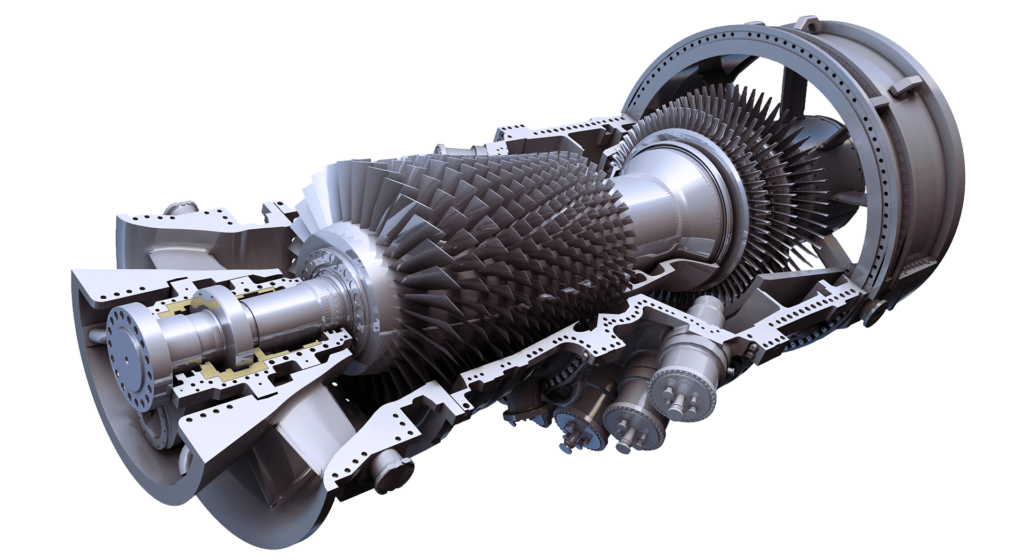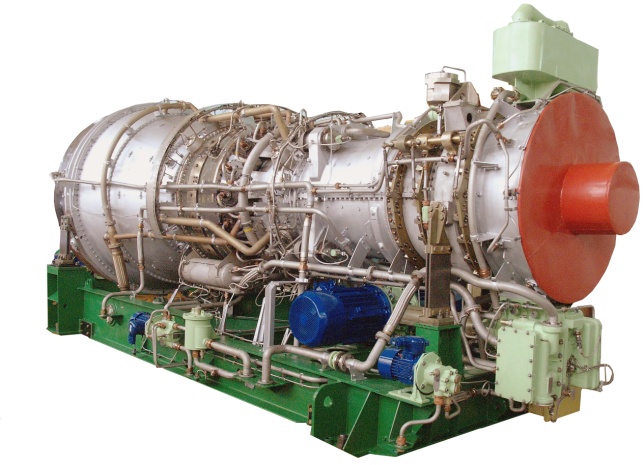DIFFERENCES AMONG GAS TURBINES TYPES - REGENERATIVE vs SIMPLE vs EXHAUST HEAT RECOVERY, WITH SINGLE-SHAFT OR MULTI-SHAFT

Regenerative Gas Turbines:
- Engineering & Design: Regenerative gas turbines feature a heat exchanger (regenerator) that recovers and preheats the exhaust gases before they enter the combustion chamber. This preheating reduces fuel consumption and improves efficiency.
- Benefits: Increased thermal efficiency, improved fuel economy, and reduced emissions.
- Limitations: Increased complexity and cost due to the inclusion of a heat exchanger. Higher maintenance requirements for the regenerator.
Simple Gas Turbines:
- Engineering & Design: Simple gas turbines operate with a straightforward configuration, consisting of a compressor, combustion chamber, and turbine. They do not incorporate any additional heat recovery systems.
- Benefits: Simplicity of design, compact size, and lower capital costs.
- Limitations: Lower thermal efficiency compared to regenerative or heat recovery systems. Higher fuel consumption and emissions.
Exhaust Heat Recovery Gas Turbines:
- Engineering & Design: Exhaust heat recovery gas turbines utilize waste heat from the turbine exhaust gases to produce additional power or provide heat for industrial processes. Heat recovery methods include steam generation, cogeneration, or combined heat and power (CHP) systems.
- Benefits: Increased overall efficiency by utilizing waste heat, enhanced power generation capacity, and potential for combined heat and power applications.
- Limitations: Additional complexity and equipment, requiring careful integration and control systems. Higher initial costs and maintenance requirements.
Single-Shaft Gas Turbines:
- Engineering & Design: Single-shaft gas turbines have a single rotating shaft that drives both the compressor and the turbine. This configuration simplifies the design and reduces the overall footprint of the turbine.
- Benefits: Compact design, simplicity, and lower installation and maintenance costs.
- Limitations: Limited flexibility in power output and operating range due to the fixed speed of the single shaft.
Multi-Shaft Gas Turbines:
- Engineering & Design: Multi-shaft gas turbines have separate shafts for the compressor and the turbine, allowing for independent control and operation of each section. They often include additional equipment, such as power turbines or generators, for specific applications.
- Benefits: Enhanced operational flexibility, better control over power generation, and the ability to drive additional equipment or generators.
- Limitations: Increased complexity and cost compared to single-shaft designs.
The choice between regenerative, simple, or exhaust heat recovery types, as well as single-shaft or multi-shaft designs, depends on specific project requirements, efficiency targets, operating conditions, and economic considerations. Proper engineering and design considerations are crucial to optimizing the performance, efficiency, and reliability of gas turbines in various applications.
WHY, WHEN, WHERE, WHAT, WHICH, HOW TO SELECT GAS TURBINES TYPES - REGENERATIVE vs SIMPLE vs EXHAUST HEAT RECOVERY, WITH SINGLE-SHAFT OR MULTI-SHAFT
WHY:
- Improve Efficiency: Different gas turbine types offer varying levels of thermal efficiency. By selecting an appropriate type, you can optimize energy conversion and reduce fuel consumption.
- Enhance Environmental Performance: Certain gas turbine designs, such as regenerative or exhaust heat recovery, can help minimize emissions and meet environmental regulations.
- Increase Operational Flexibility: Multi-shaft gas turbines offer more control over power output and can accommodate varying operational demands, improving flexibility in power generation and load following.
WHEN:
- New Projects: During the initial design and planning stages of a new power generation or oil and gas project, the selection of gas turbine types should be considered based on project specifications, environmental requirements, and performance objectives.
- Upgrades and Retrofits: Existing facilities can benefit from retrofitting or upgrading existing gas turbine systems to improve efficiency, reduce emissions, or enhance operational flexibility.
WHERE:
- Power Generation: Gas turbines are widely used in power generation applications, including utility-scale power plants, industrial cogeneration, and distributed generation.
- Oil and Gas Industry: Gas turbines are utilized in oil and gas operations for power generation, compression, and other mechanical drive applications.
WHAT:
- Gas Turbine Types: Evaluate the advantages and limitations of different gas turbine types such as regenerative, simple, or exhaust heat recovery, based on efficiency requirements, emissions targets, and operational needs.
- Power Output Requirements: Consider the desired power output, load-following capability, and operational flexibility when selecting single-shaft or multi-shaft configurations.
WHICH:
- Evaluation of Options: Conduct a thorough evaluation of available gas turbine technologies, considering factors such as performance, emissions, maintenance requirements, and cost-effectiveness.
- Technical Expertise: Engage with experienced engineers, consultants, and gas turbine manufacturers to assist in the selection process and provide expert guidance based on project-specific requirements.
HOW:
- Feasibility Studies: Perform feasibility studies to assess the technical and economic viability of different gas turbine options, considering factors such as fuel availability, site conditions, emissions regulations, and project constraints.
- Engineering and Design: Utilize advanced engineering tools and methodologies to optimize the gas turbine system design, including components, controls, and auxiliary systems, ensuring efficient and reliable operation.
- Compliance and Safety: Ensure compliance with industry standards, regulations, and safety guidelines throughout the engineering and design process, considering factors such as noise control, emissions control, and operational safety.
Applying a comprehensive approach to the engineering and design of gas turbines, considering the specific needs of power generation and oil and gas industries, will help improve reliability, safety, and performance while maximizing efficiency and minimizing environmental impact.
PROCEDURES, ACTIONS, STUDIES, MITIGATIONS, RECOMMENDATIONS TO APPLY GAS TURBINES TYPES
Feasibility Studies:
- Conduct feasibility studies to evaluate the technical and economic viability of different gas turbine types, considering factors such as fuel availability, emissions regulations, power output requirements, and project constraints.
- Perform site assessments to determine the suitability of the location for the chosen gas turbine type, considering environmental conditions, space availability, and infrastructure requirements.
Engineering and Design:
- Utilize advanced engineering tools and software to optimize the design of gas turbines, considering factors such as aerodynamics, thermodynamics, mechanical integrity, and system integration.
- Perform detailed component design and analysis, including rotor dynamics, blade profiles, combustion chambers, and heat recovery systems, to ensure reliable and efficient operation.
- Implement robust control and monitoring systems to optimize performance, detect anomalies, and enable safe and efficient operation.
Risk Assessments and Mitigations:
- Conduct risk assessments to identify potential hazards and risks associated with the chosen gas turbine type and configuration.
- Implement appropriate mitigation measures to minimize identified risks, such as incorporating redundant systems, installing safety devices, implementing emergency shutdown procedures, and providing proper training for operators and maintenance personnel.
Compliance with Standards and Regulations:
- Ensure compliance with relevant industry standards, codes, and regulations, including environmental regulations, safety guidelines, and performance standards.
- Stay updated with the latest revisions and updates to applicable standards and regulations and incorporate them into the engineering and design process.
Performance Optimization:
- Perform computational fluid dynamics (CFD) simulations and advanced modeling techniques to optimize the performance of gas turbines, including efficiency, power output, emissions control, and reliability.
- Conduct performance testing and validation to verify the design assumptions, performance predictions, and compliance with project requirements.
Maintenance and Reliability:
- Develop comprehensive maintenance plans and schedules, including routine inspections, preventive maintenance activities, and condition monitoring techniques.
- Implement predictive maintenance strategies, such as vibration analysis, thermography, and performance monitoring, to identify potential issues and prevent unscheduled shutdowns.
- Establish a robust spare parts management system to ensure timely availability of critical components.
Training and Knowledge Transfer:
- Provide training programs and knowledge transfer initiatives to operators and maintenance personnel to ensure proper understanding and operation of the chosen gas turbine type.
- Encourage collaboration and knowledge sharing among engineering, operations, and maintenance teams to foster a culture of continuous improvement and best practices.
By following these procedures, taking appropriate actions, conducting thorough studies, implementing mitigations, and incorporating recommended practices, the engineering and design of gas turbines can be optimized to improve reliability and safety in power generation, oil, and gas industries.

